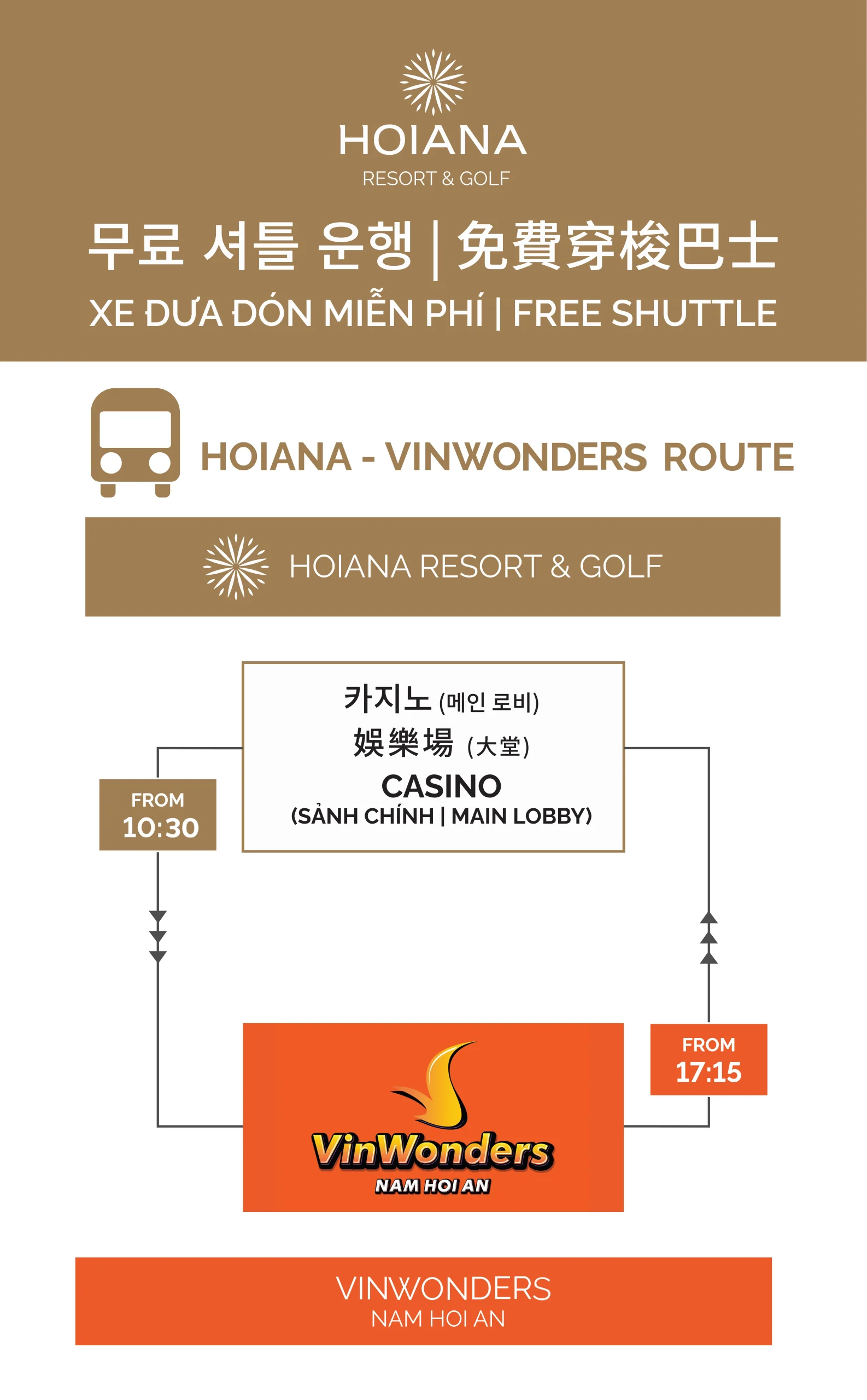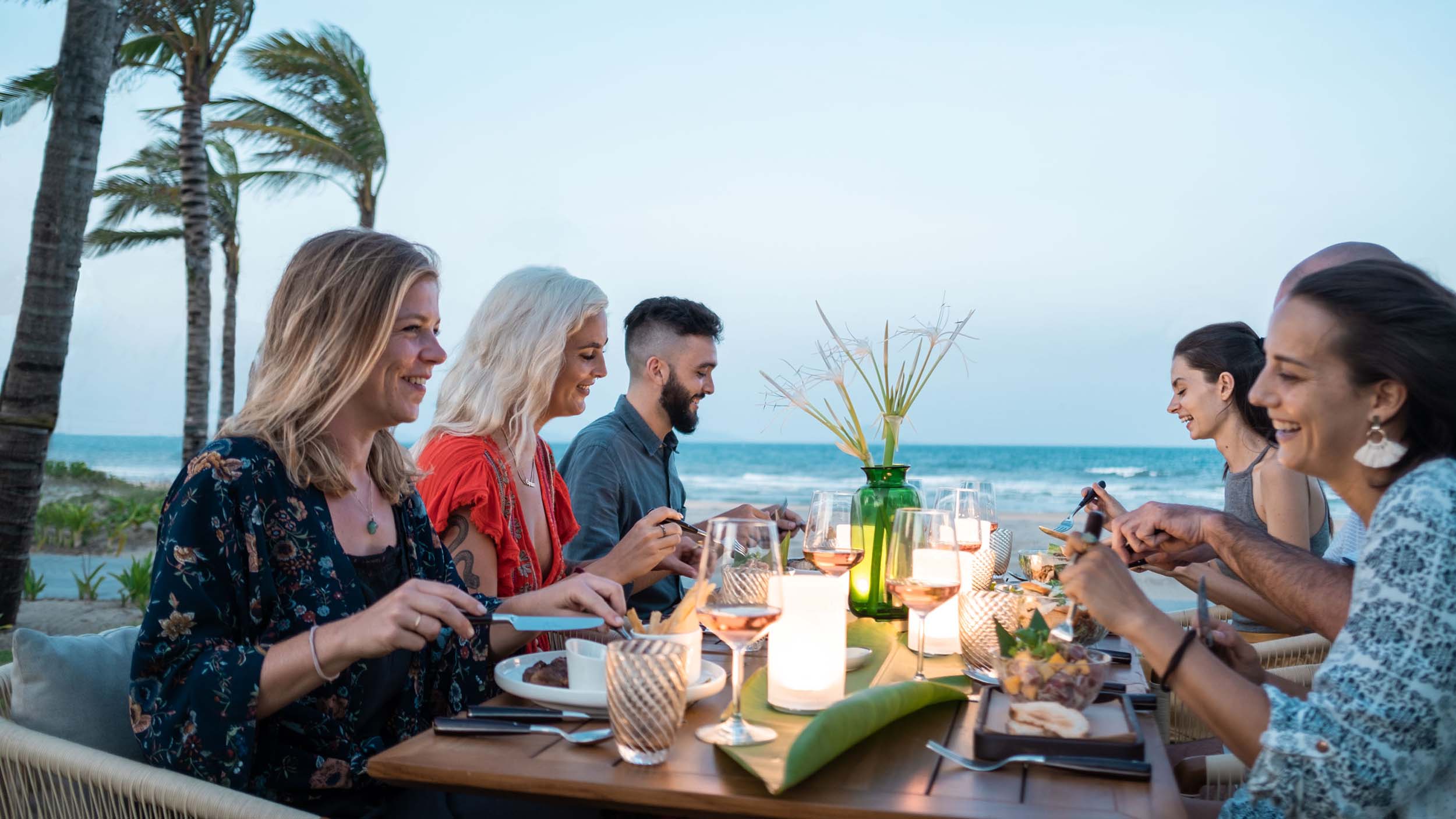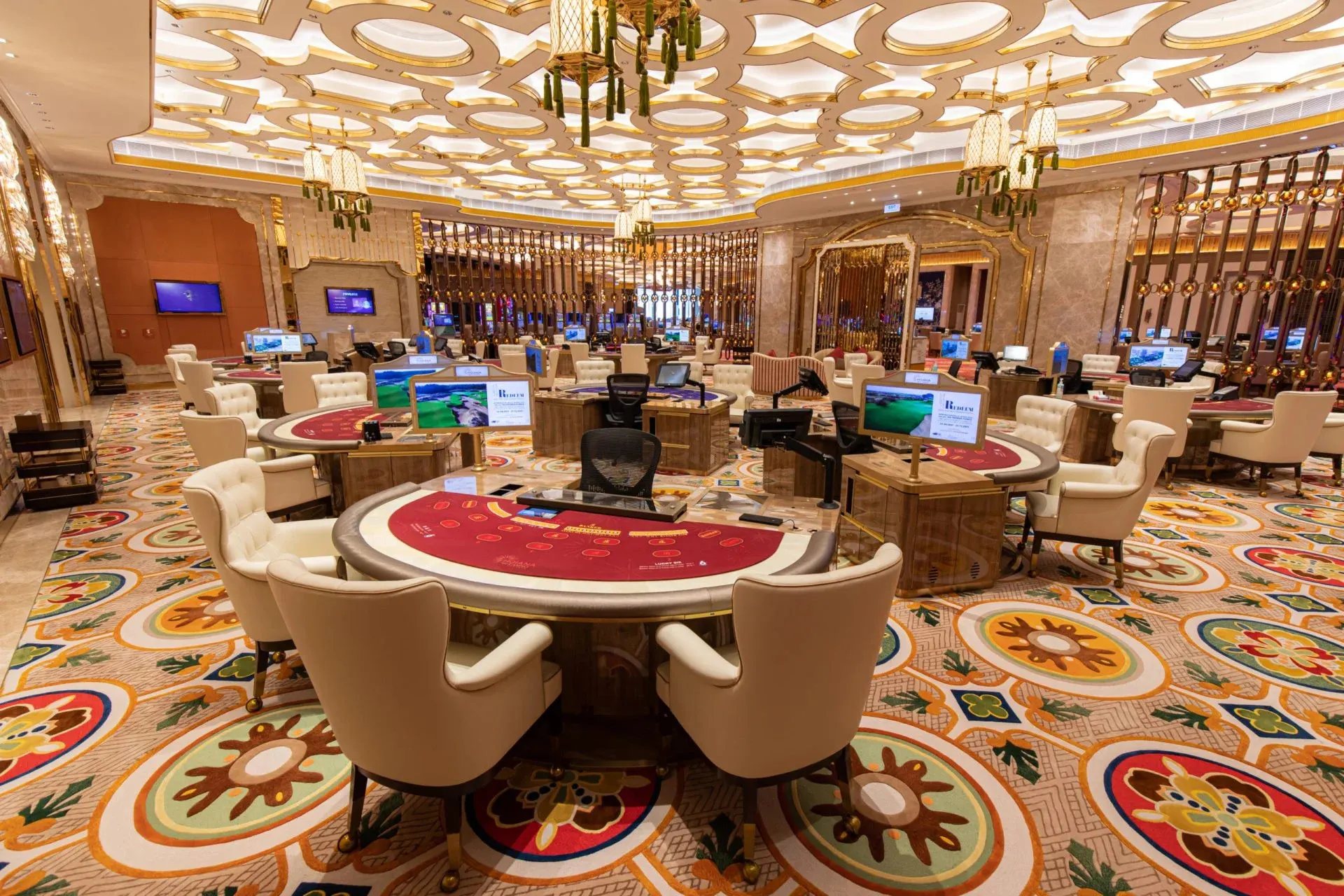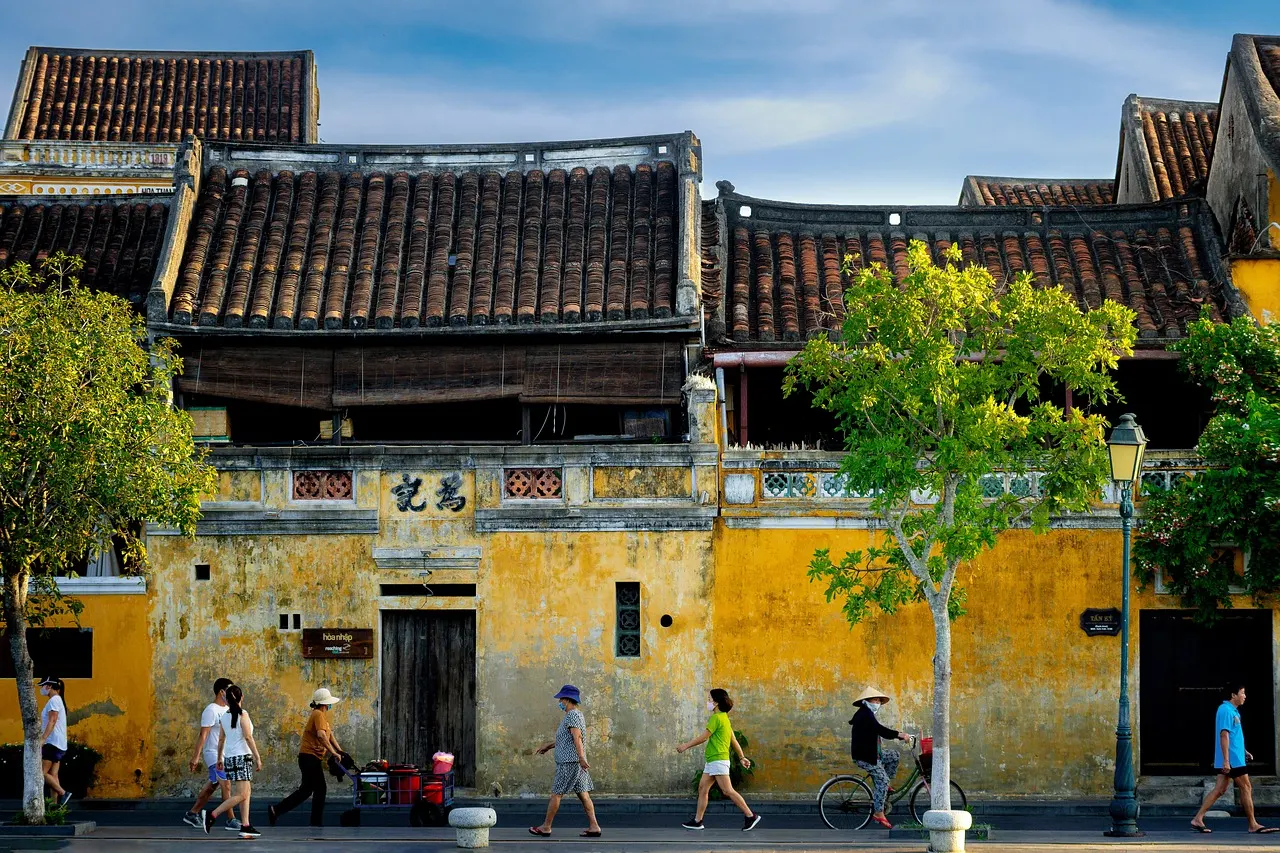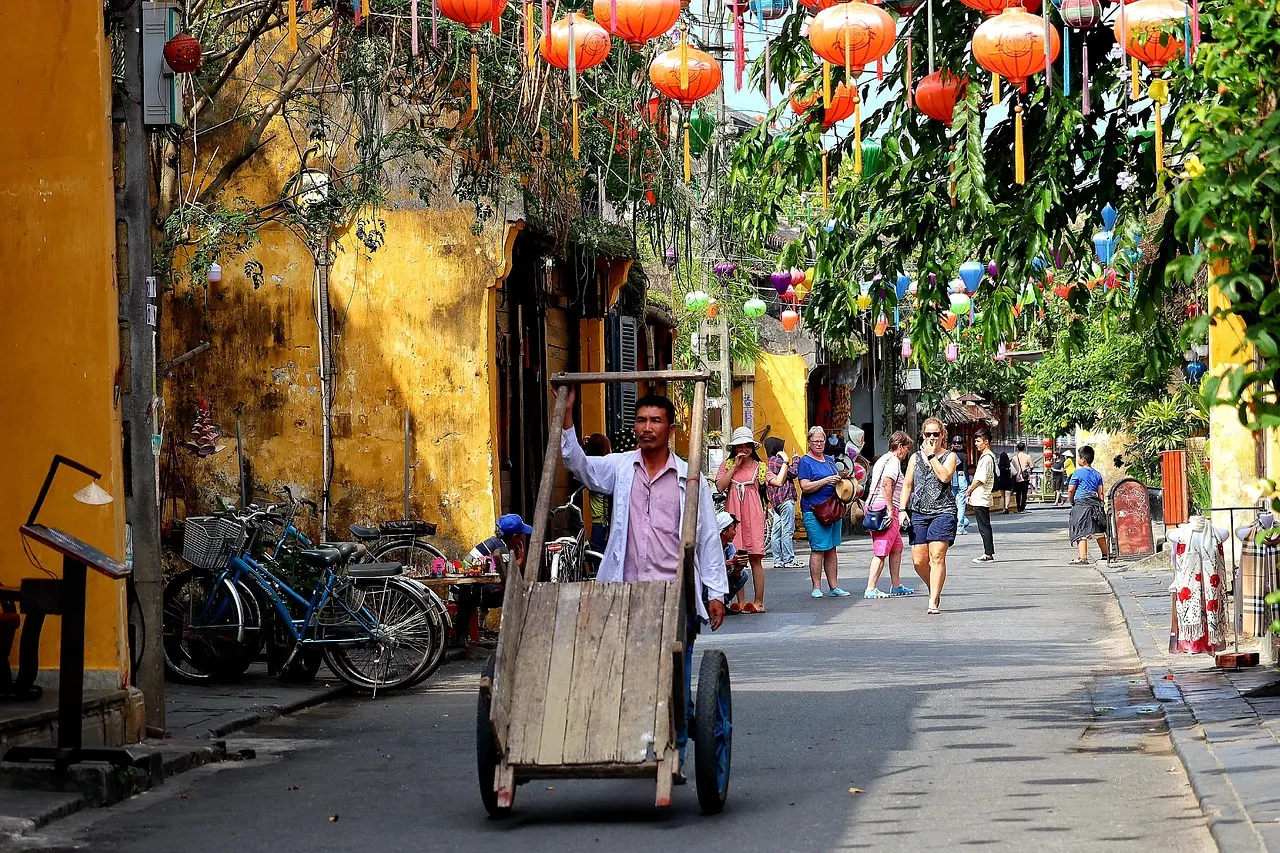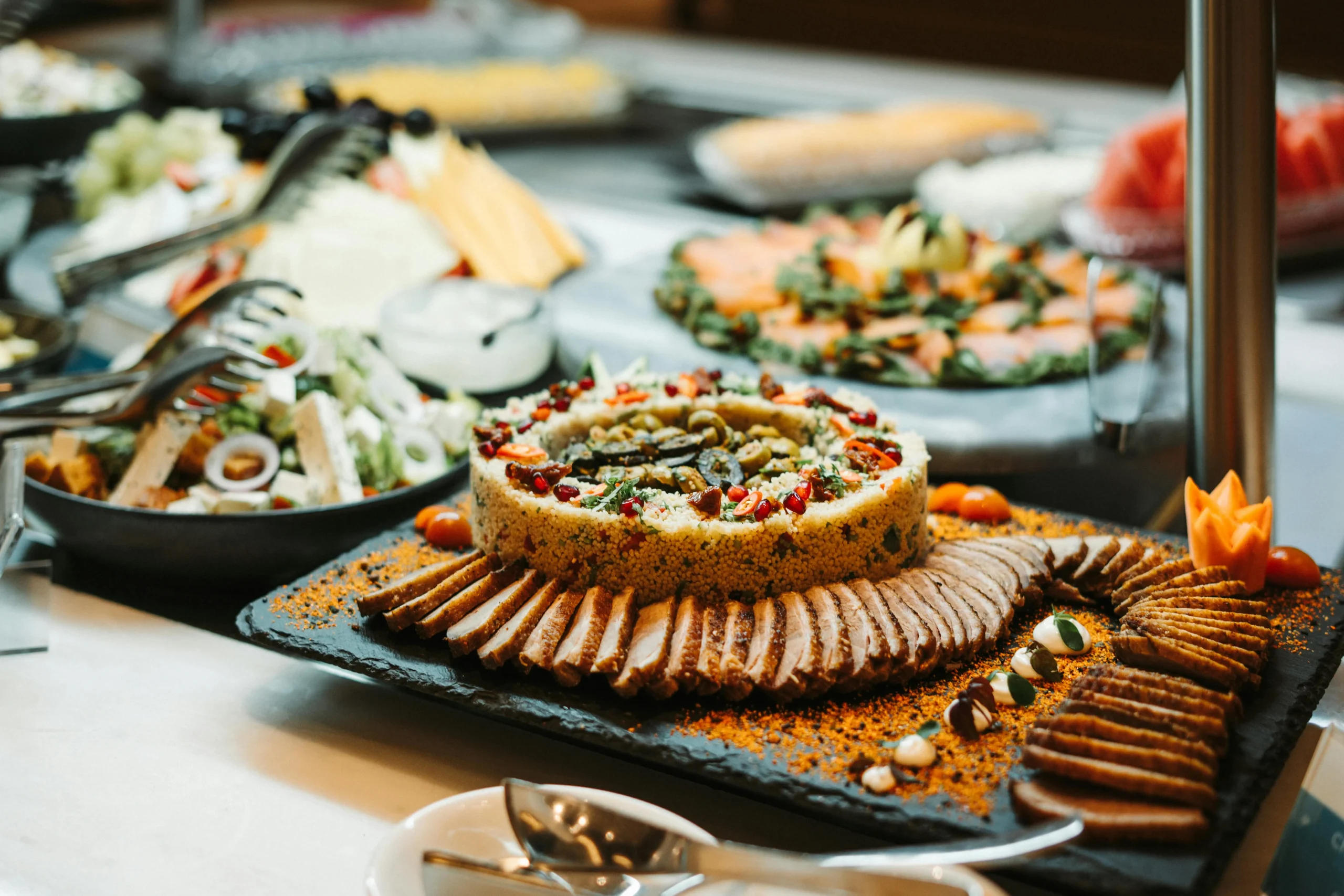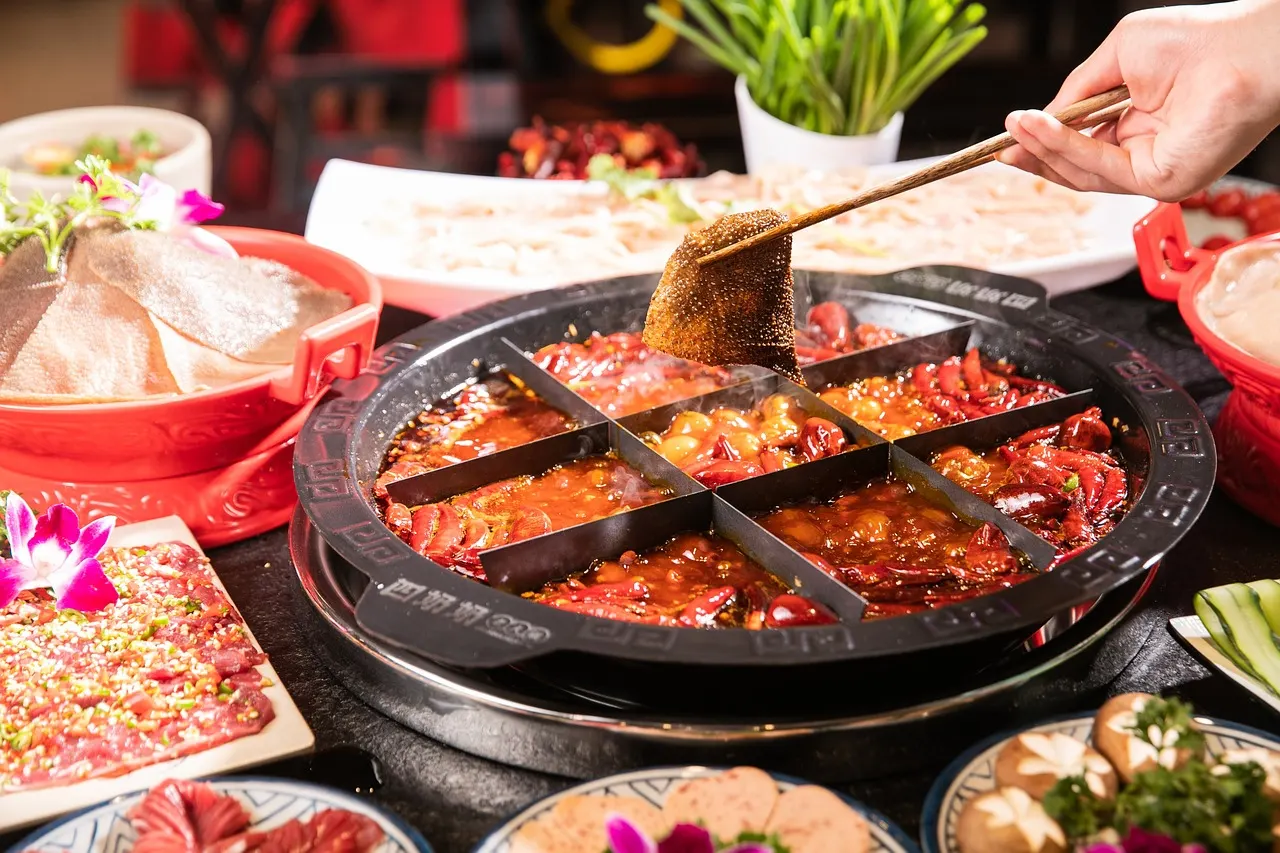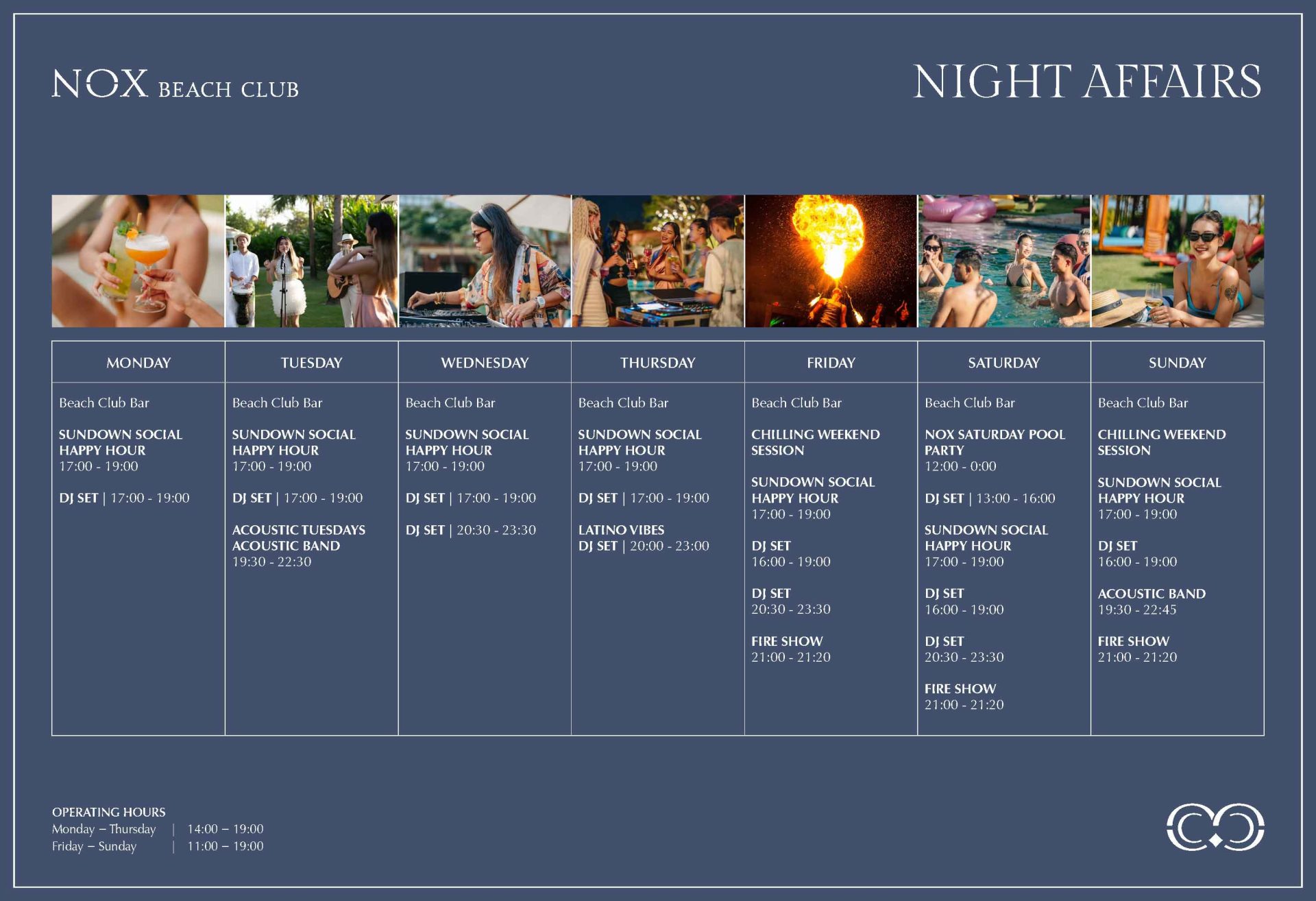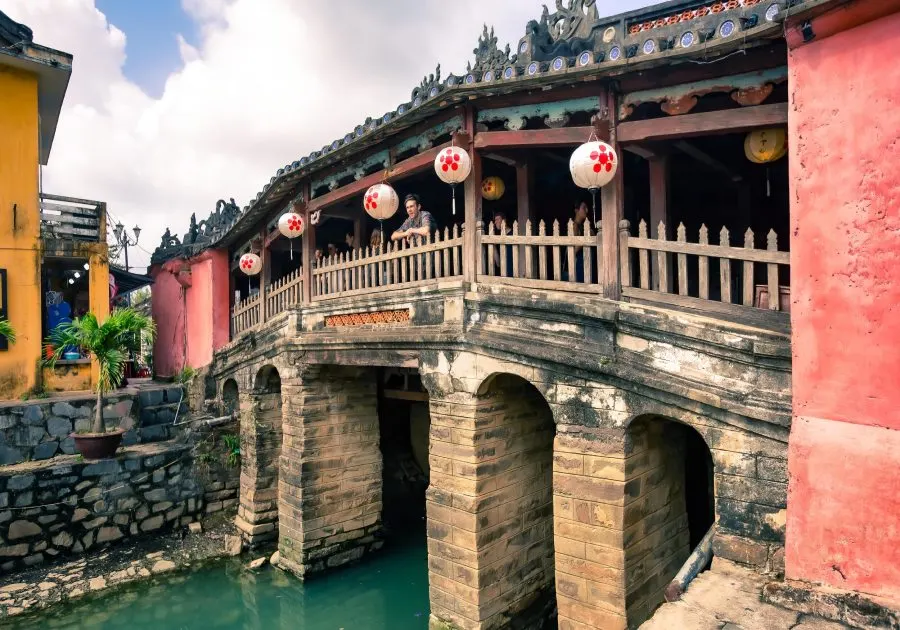
The Japanese Bridge Hoi An is one of the most iconic landmarks in Vietnam, symbolizing the rich cultural heritage and harmony between diverse communities. Built in the 16th century by Japanese merchants, this beautifully preserved structure blends Japanese, Vietnamese and Chinese architectural influences, reflecting Hoi An’s history as a thriving trading port. Whether you’re drawn by its historical charm, intricate carvings, or the legends surrounding it, the Japanese Bridge in Hoi An remains a timeless testament to cultural unity.
Overview of the Japanese Bridge in Hoi An
Nestled in the heart of Hoi An Ancient Town, the Japanese Bridge Hoi An, also known as the Japanese Covered Bridge or Chua Cau, gracefully spans the serene Hoai River. This historic structure serves as a timeless link between the past, present, and future, embodying the rich cultural fusion of Vietnamese and Japanese influences.
Visitors can find the bridge connecting Tran Phu Street and Nguyen Thi Minh Khai Street in Hoi An City, Quang Nam Province. The bridge is accessible 24 hours a day, allowing tourists to appreciate its beauty at any time. Notably, there is no entrance fee to cross the bridge itself; however, accessing certain parts of Hoi An Ancient Town may require a ticket. While visiting this landmark, be sure to explore the many things to do in Hoi An, from vibrant markets and historical sites to cultural performances and local cuisine.
History and Cultural Significance of the Japanese Bridge
The Japanese Bridge Hoi An is an iconic symbol nestled in the heart of Hoi An Ancient Town, Vietnam. Japanese Bridge Hoi An history dates back to the late 16th century, when Japanese merchants constructed it to connect the Japanese and Chinese quarters, which were separated by a canal. This strategic design facilitated trade and strengthened cultural ties between the two communities.
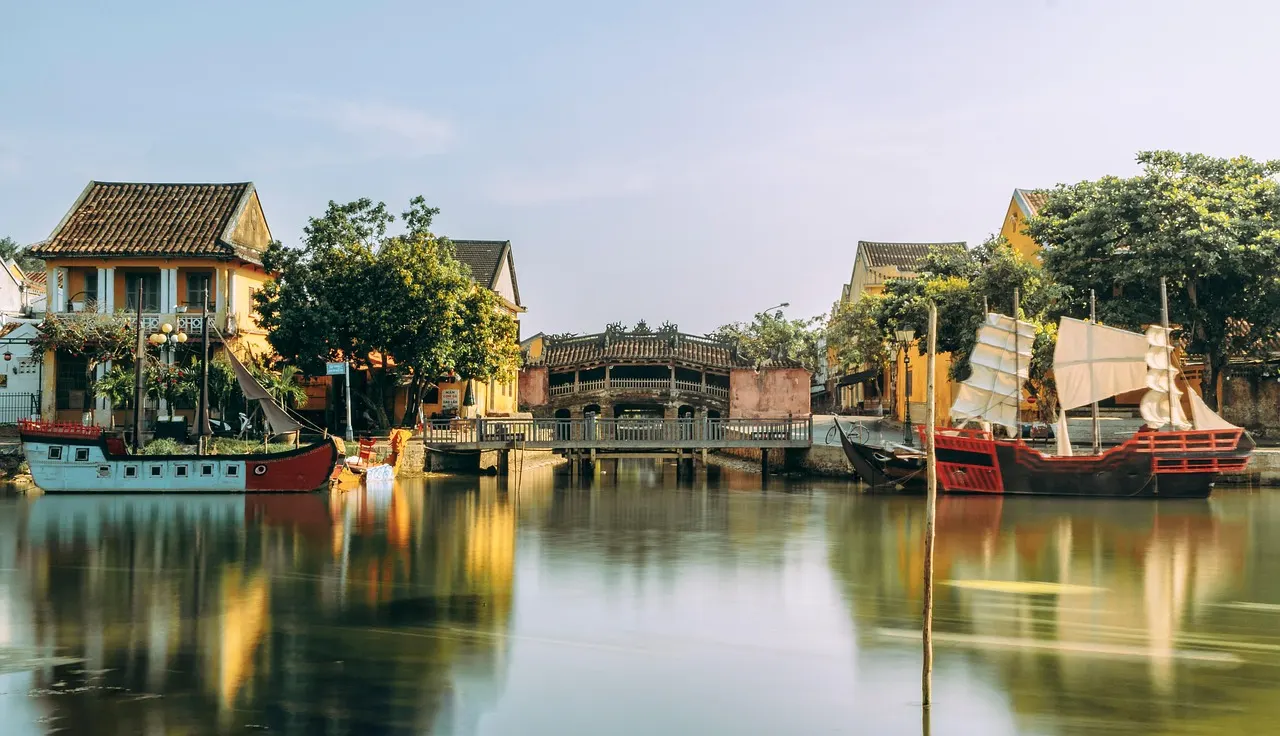
Beyond its practical function, the Japanese Bridge Hoi An holds significant cultural and historical importance. In 1653, a small temple dedicated to the northern deity Tran Vu, revered as the god of happiness, wealth, and health, was added to the bridge, transforming it into a spiritual haven for locals and visitors alike. Recognized for its historical value, the bridge has undergone several restorations to preserve its structural integrity and cultural essence, standing today as a testament to Hoi An’s rich past and enduring spirit.
Unique Architectural Features of Japanese Bridge
The Japanese Bridge Hoi An architecture is a remarkable fusion of Japanese, Vietnamese, and Chinese design elements, reflecting the town’s rich multicultural heritage. Constructed primarily from red lacquered wood atop a sturdy stone foundation, the bridge spans approximately 18 meters in length and 3 meters in width.
Its curved, pagoda-style roof is adorned with yin and yang patterns, symbolizing balance and harmony, and is covered with traditional yin-yang tiles, a hallmark of Vietnamese roofing techniques. Intricate carvings and decorative details further enhance its aesthetic appeal, showcasing the craftsmanship of the era.
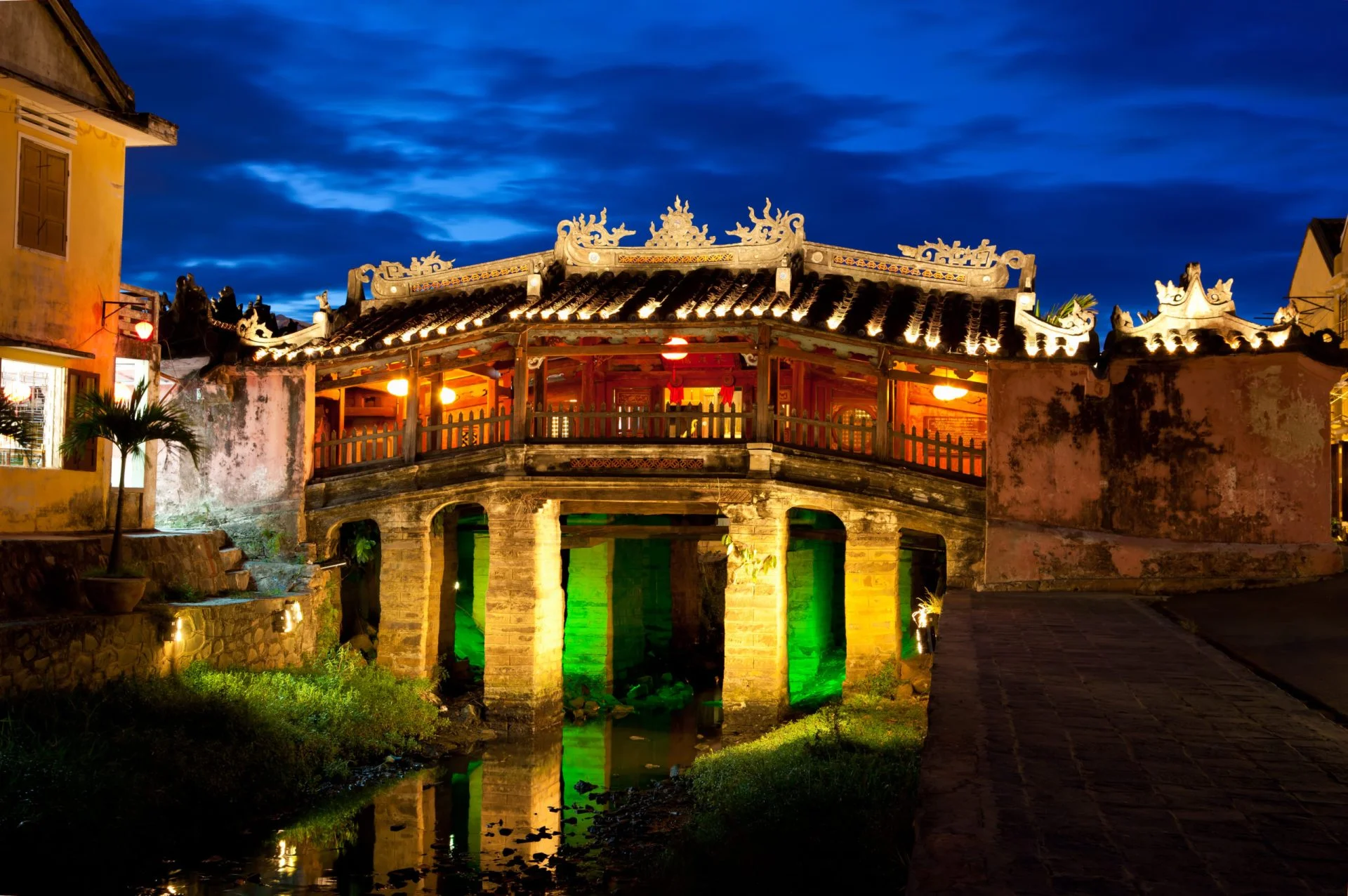
A distinctive feature of the Japanese Bridge is the presence of statues at its entrances: a pair of monkeys on one end and a pair of dogs on the other. These statues are believed to represent the years of the bridge’s commencement and completion, corresponding to the Chinese zodiac signs.
Inside the bridge, a small temple dedicated to the northern deity Tran Vu adds a spiritual dimension to the structure, serving as a place of worship and reflection for locals and visitors alike. This harmonious blend of architectural styles and cultural symbols makes the Japanese Bridge not only a functional passageway but also a profound emblem of Hoi An’s historical and cultural synthesis.
Facts about Japanese Covered Bridge You Should Know
The Japanese Covered Bridge in Hoi An is more than just an architectural marvel—it holds centuries of history, cultural significance, and fascinating stories that make it one of Vietnam’s most iconic landmarks.
The Japanese Bridge in Hoi An Appears on the Vietnamese Dong Banknote
The Japanese Bridge Hoi An is featured on the back of Vietnam’s VND 20,000 polymer banknote, first issued in 2006 and still in circulation today. Its presence on the currency highlights the bridge’s cultural, historical, and spiritual significance to the people of Hoi An, symbolizing both their heritage and daily life.
The Bridge’s Temple is Not Dedicated to Buddha
The Japanese Bridge Hoi An is essentially a pagoda, but unlike traditional temples, it is not dedicated to Buddha. Instead, it honors Tran Vu, the deity believed to protect the land, control storms and floods, and bring prosperity and happiness to the people. Every year, both locals and visitors from around the world come to this historic site not only to admire its beauty but also to seek peace and spiritual solace in its serene surroundings.
The Japanese Bridge Consists of Two Distinct Sections
The Bridge Pagoda in Hoi An consists of two distinct sections: the bridge and the temple, which is why it is called “Chua Cau” in Vietnamese (“Chua” meaning “temple” and “Cau” meaning “bridge”). The bridge was originally constructed over the Thu Bon River, while the temple was added 60 years later on its northern side. When visiting this historic monument, be sure to explore both structures, as each holds unique cultural and architectural significance.
How To Reach Japanese Bridge in Hoi An
To reach the Japanese Bridge in Hoi An, begin at the Central Market in the heart of the Ancient Town. From there, walk along Tran Phu Street, a charming thoroughfare lined with historic architecture, cafes, and shops. At the western end of Tran Phu Street, you’ll find the entrance to the Japanese Covered Bridge, also known as Chua Cau. This route offers a scenic and direct path to one of Hoi An’s most iconic landmarks.
The Japanese Bridge Hoi An is part of the Hoi An Ancient Town Heritage Site, and while the bridge itself does not have a separate entrance fee, visitors must purchase a Hoi An Old Town ticket (approximately 120,000 VND for international tourists) to explore designated heritage sites, including the bridge. This ticket grants access to multiple attractions within the ancient town, preserving its historical and cultural significance.
Things to Do Near Japanese Bridge Hoi An
Exploring the area around the Japanese Bridge in Hoi An offers a rich tapestry of cultural and historical experiences. Here are some must-visit attractions:
Hoi An Ancient Town
A UNESCO World Heritage Site, Hoi An Ancient Town is a well-preserved example of a Southeast Asian trading port dating from the 15th to the 19th century. Strolling through its narrow lanes, visitors encounter a blend of Vietnamese, Chinese, Japanese, and European architectural styles, reflecting the town’s diverse heritage. Traditional wooden houses, assembly halls, and pagodas line the streets, offering a glimpse into Hoi An’s vibrant past.
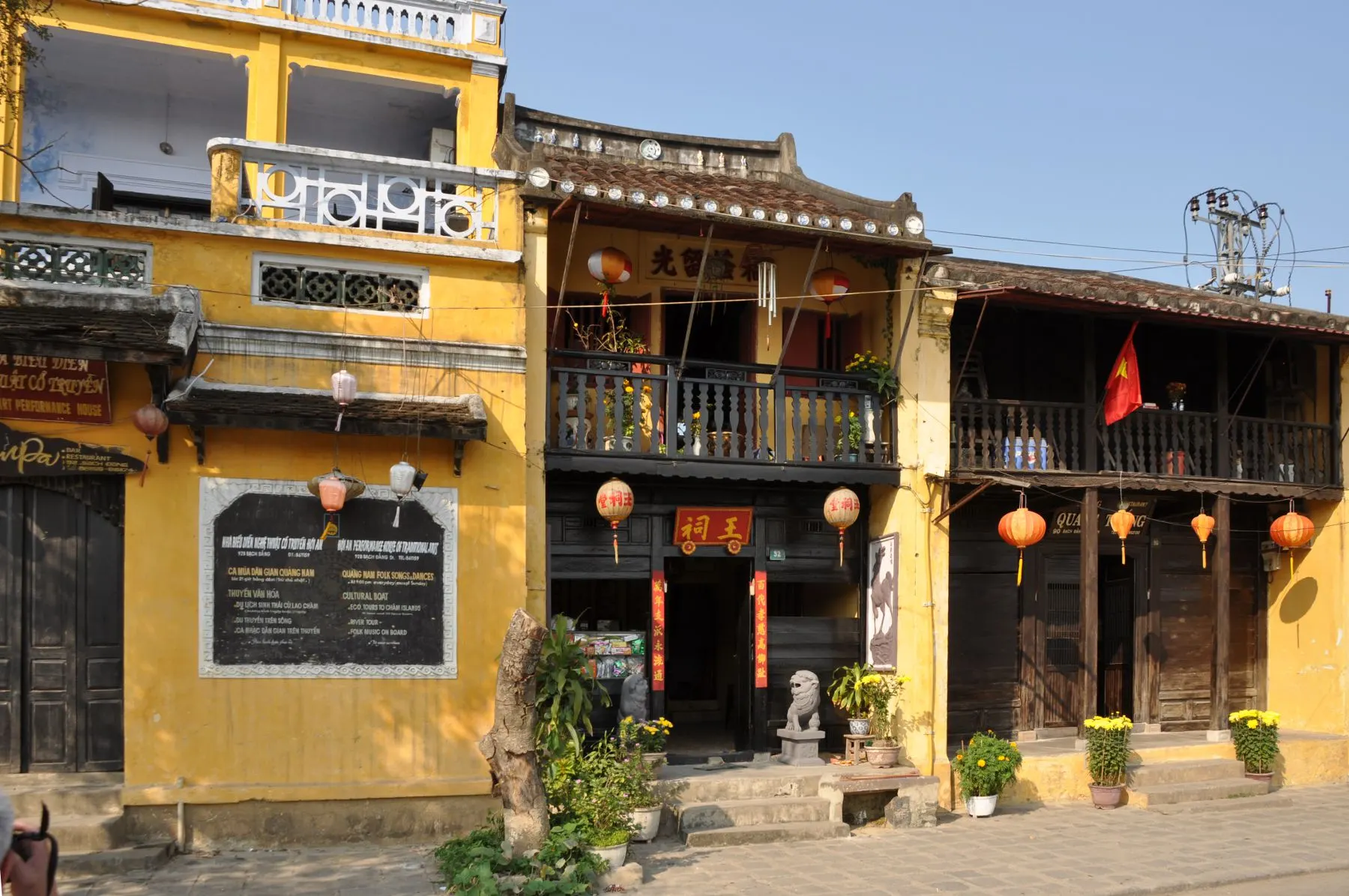
The town’s riverside setting adds to its charm, with colorful lanterns lighting the streets by night. Local markets, artisan shops, and eateries provide ample opportunities to engage with the culture and savor regional delicacies. Visiting Hoi An Ancient Town is like stepping back in time, offering an immersive experience into the area’s rich history and traditions.
Hoi An Pagoda
Among the notable religious sites near the Japanese Bridge Hoi An is the Hoi An Pagoda – Phap Bao, a serene Buddhist pagoda known for its tranquil ambiance and traditional architecture. Visitors can admire the intricate carvings and serene courtyards and engage in quiet reflection or participate in local ceremonies.
The pagoda serves as a spiritual haven amidst the bustling town, offering insight into the religious practices and architectural styles that have influenced Hoi An over centuries. It’s a peaceful retreat for those looking to understand the spiritual fabric of the region.
Hoi An Assembly Hall
The Fujian Assembly Hall (Phuc Kien) is one of the most prominent Hoi An Assembly Halls. Originally a gathering place for Chinese immigrants from Fujian Province, it now serves as a temple dedicated to Thien Hau, the sea goddess. The hall boasts ornate architecture, with elaborate carvings, colorful murals, and a beautifully landscaped courtyard.
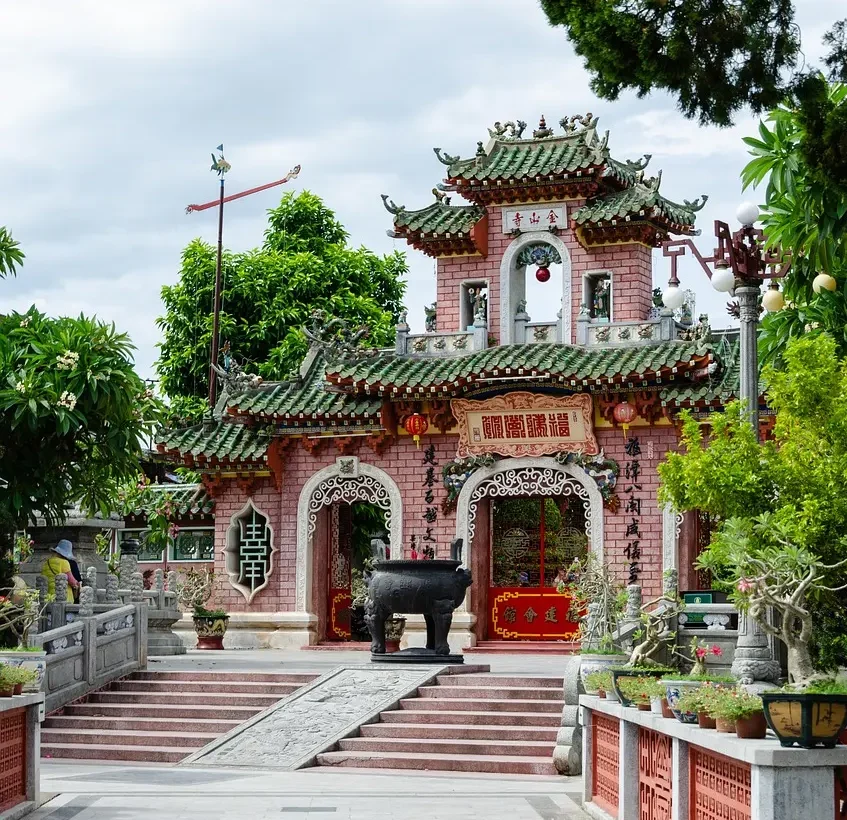
Visitors can explore the hall’s rich history, evident in the preserved artifacts and altars. The assembly hall stands as a testament to the cultural amalgamation that characterizes Hoi An, reflecting the town’s historical role as a melting pot of different communities.
Memories Show Hoi An
For an immersive cultural experience, the Hoi An Memories Show is a must-see. This large outdoor performance takes place on an island stage and features over 500 performers. The show chronicles the history of Hoi An through a series of captivating scenes, blending traditional and modern elements.
Audiences are treated to a visual spectacle with impressive choreography, vibrant costumes, and state-of-the-art lighting. The Memories Show Hoi An offers a unique way to understand the town’s heritage, making it a highlight for visitors seeking to delve deeper into the local culture.
Hoi An Lantern Festival
The Hoi An Lantern Festival is a monthly event that transforms the ancient town into a mesmerizing display of lights. Held on the 14th day of every lunar month, the festival celebrates the full moon with streets adorned with colorful lanterns, traditional music, and various cultural activities.
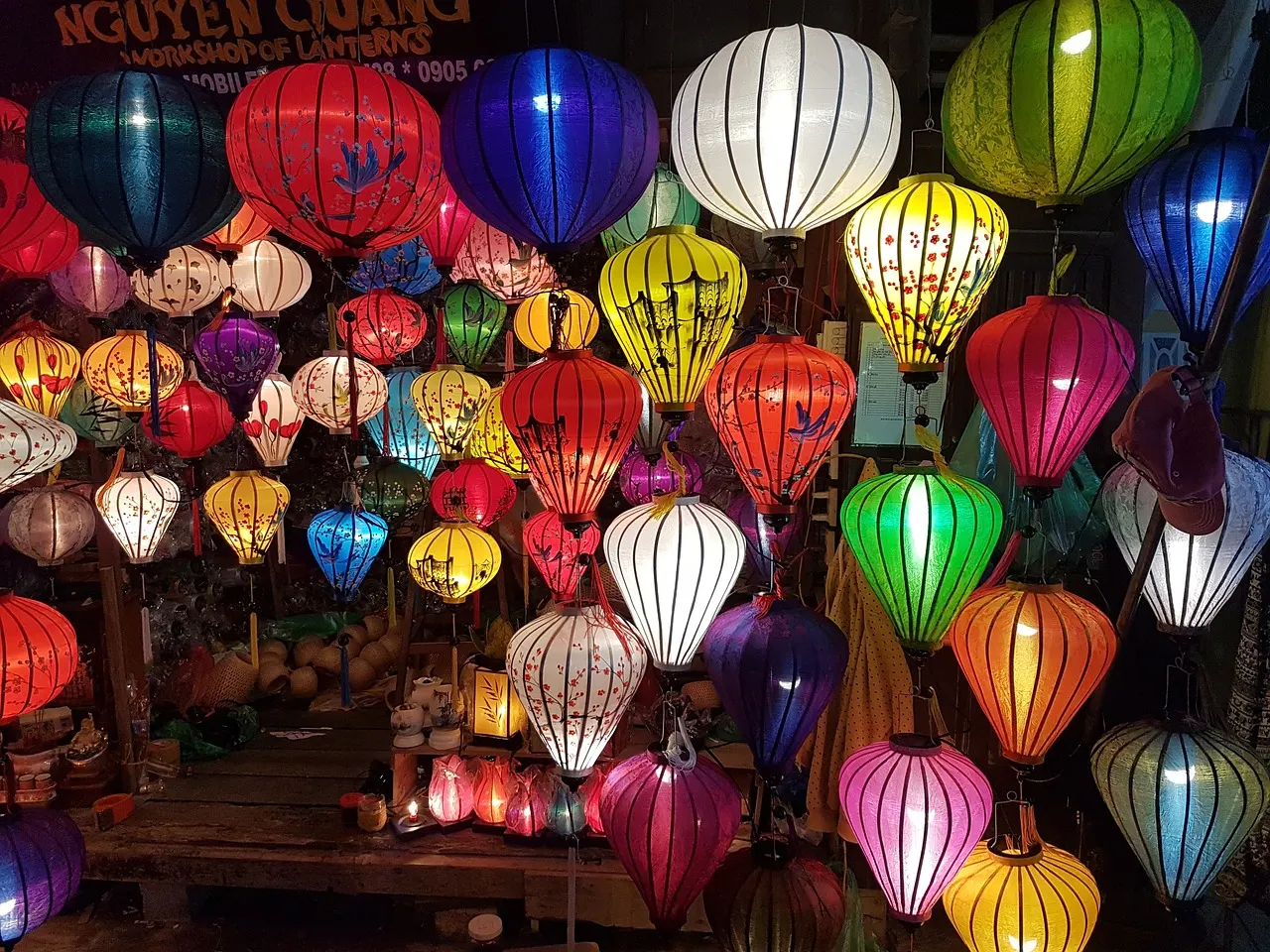
During the festival, locals and tourists release paper lanterns onto the Hoai River, creating a picturesque scene that embodies the town’s enchanting spirit. Participating in the Hoi An Lantern Festival offers a memorable experience, allowing visitors to engage with local traditions and witness the town’s beauty in a unique light.
Thanh Ha Pottery Village
Located approximately 3 kilometers west of Hoi An’s Ancient Town, Thanh Ha Pottery Village is a traditional craft village with a history spanning over 500 years. Visitors can observe artisans skillfully crafting pottery using age-old techniques and even try their hand at creating their own pieces.
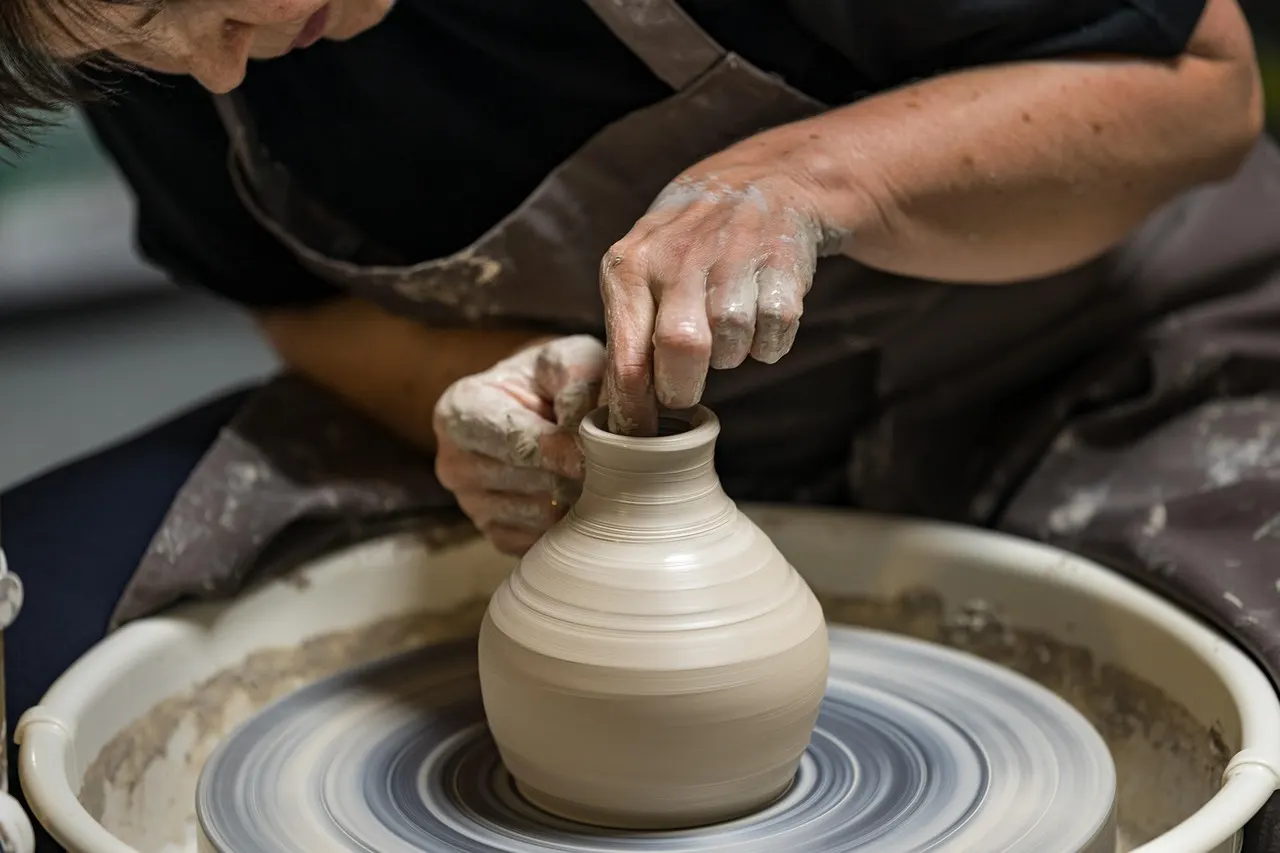
The village offers workshops and demonstrations, providing insight into the craftsmanship that has been passed down through generations. Purchasing souvenirs directly from the artisans supports the local community and preserves this traditional art form.
Hoi An Market
Situated near the Thu Bon River, Hoi An Market is a bustling hub of daily activity where locals and tourists converge. The market offers a vibrant array of fresh produce, seafood, spices, and local delicacies, providing a sensory feast for visitors. It’s an ideal place to sample traditional dishes, such as cao lầu and bánh mì, and to engage with vendors to learn about regional ingredients and culinary practices.
In addition to food, the market features stalls selling handcrafted goods, textiles, and souvenirs. Exploring Hoi An Market not only offers a taste of local flavors but also supports the community’s artisans and contributes to the preservation of traditional crafts.
Incorporating these activities into your itinerary will enrich your visit to the Japanese Bridge Hoi An, offering a comprehensive experience of the town’s historical landmarks, cultural events, and artisanal traditions.
Tips for Visiting the Japanese Bridge
- The best time to visit the Japanese Bridge Hoi An is between 9:00 a.m. and 3:00 p.m., when crowds are minimal, allowing for a more peaceful experience.
- In the evening, from 7:00 p.m. to 8:30 p.m., visitors can enjoy the lively atmosphere of Hoi An Ancient Town, participating in traditional folk games and watching street performances that showcase the town’s rich cultural heritage.
- For a truly enchanting experience, take a bamboo boat cruise along the canal at night. The shimmering lantern lights, nostalgic ambiance, and serene waters create an unforgettable moment, allowing visitors to immerse themselves in the magical charm of Old Town.
- To make the most of the visit, hiring a local tour guide is highly recommended. Guides provide historical insights, explain the unique architecture of the bridge, and ensure visitors fully appreciate its significance.
- After exploring the Japanese Bridge Hoi An, visitors should also check out nearby historical landmarks, including Quan Cong Temple, Phuc Kien Assembly Hall, and Tan Ky Ancient House. These sites offer a deeper understanding of Hoi An’s rich cultural and architectural heritage, making them must-visit destinations in the city.
Where to Stay When Visiting Japanese Bridge in Hoi An
When planning a visit to the Japanese Bridge in Hoi An, choosing the right accommodation can enhance your experience. Understanding the best time to visit Hoi An will help you make the most of your trip, ensuring pleasant weather and vibrant cultural activities.
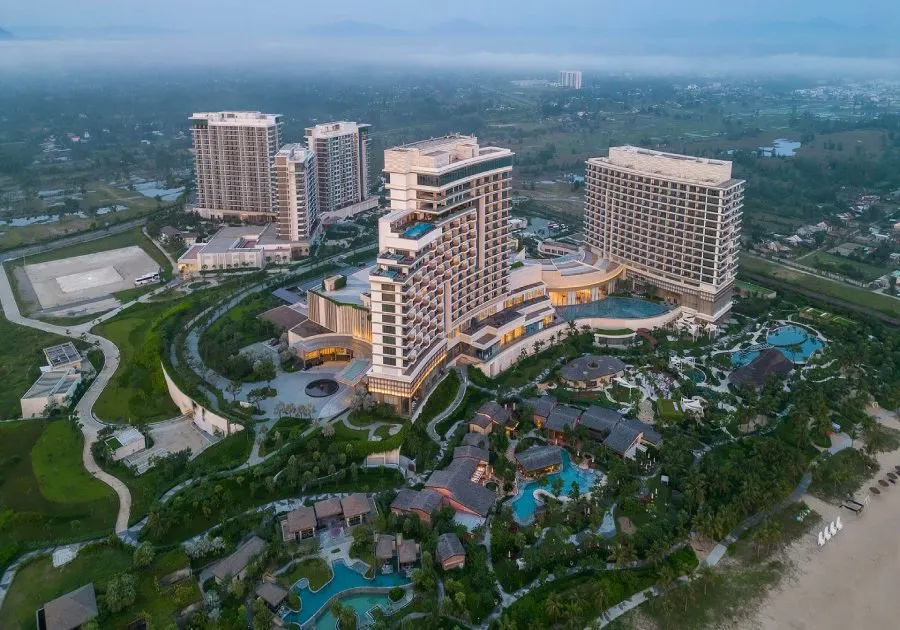
Hoiana Resort & Golf, located just a short drive from Hoi An’s historic center, offers a luxurious stay with world-class amenities. This integrated resort features over 1,000 stylish rooms, suites, and villas across four hotels, providing guests with a range of options to suit their preferences. The resort’s prime beachfront location allows visitors to enjoy stunning coastal views and easy access to the area’s attractions.
One of the premier accommodations within the resort is the Hoiana Hotel & Suites. This luxury hotel blends traditional artistry with contemporary sophistication, offering 141 sumptuous suites with enchanting vistas of the lush resort and sparkling coastline. Guests can indulge in various on-site amenities, including an outdoor swimming pool, a fitness center, and a selection of dining venues that cater to diverse culinary tastes. The hotel’s proximity to Hoi An’s ancient town makes it a convenient base for exploring the Japanese Bridge and other cultural landmarks.
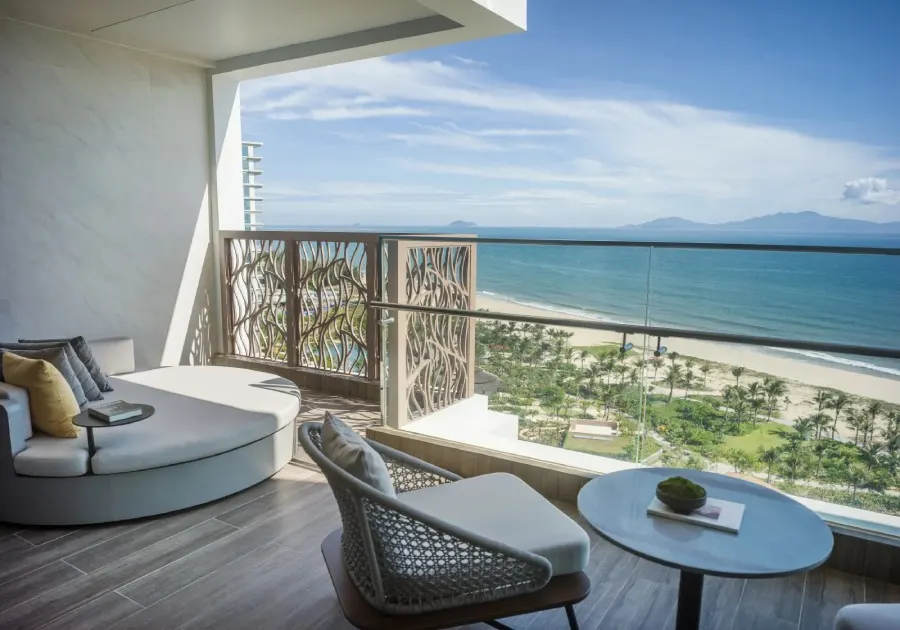
For travelers seeking a vibrant and dynamic atmosphere, the New World Hoiana Beach Resort within the Hoiana complex is an excellent choice. This resort showcases impeccably tasteful design with thoughtful details and a warm, welcoming ambiance. Dining options bring together a melting pot of flavors and ingredients from across the world, along with an innovative take on the rich cuisine of central Vietnam. The resort’s location along a four-kilometer stretch of sandy beach provides guests with ample opportunities for relaxation and recreation.
Beyond luxurious accommodations, Hoiana Resort & Golf offers a plethora of activities to enrich your stay. Golf enthusiasts can tee off at the world-class Hoiana Shores Golf Club, set against a spectacular coastline and unspoiled natural terrain. The resort also boasts over 20 restaurants and bars, ensuring a diverse culinary journey for every palate. With its blend of luxury, entertainment, and proximity to cultural sites like the Japanese Bridge in Hoi An, Hoiana Resort & Golf stands out as a premier destination for travelers seeking both relaxation and adventure.
Conclusion
The Japanese Bridge in Hoi An stands as a timeless testament to the city’s rich history, cultural harmony, and architectural beauty. More than just a crossing, it embodies the deep connections between Japanese, Vietnamese, and Chinese influences, reflecting Hoi An’s legacy as a thriving international trading port. Its enduring presence, from its intricate carvings to its spiritual significance, continues to captivate visitors from around the world.
Whether admired for its historical importance, architectural elegance, or symbolic meaning, the Japanese Bridge in Hoi An remains a cherished landmark that unites the past, present, and future.




